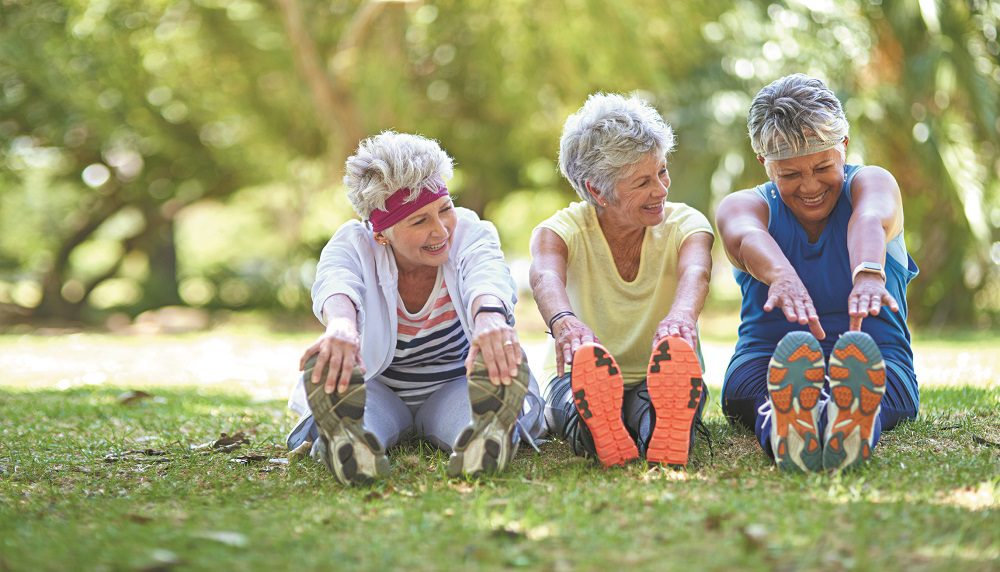When you think about exercising your core, you probably think about planks, crunches, and other moves aimed at strengthening your abdomen, back, and pelvic area. But your body has another set of core muscles that help keep you upright, mobile, and free of pain: the core muscles of your feet. Exercising these muscles might have benefits for everyone from runners who want to prevent injuries to frail older adults who want to prevent falls. If you’ve never thought about your foot muscles, it’s time to start.
Benefits of training your feet
There’s good reason to believe that a foot-strengthening routine might keep all sorts of feet healthier and less prone to pain and deformity. Even common conditions such as bunions and hammertoes might be prevented or limited by keeping feet in better working condition from childhood onward.
Older adults, whose foot muscles typically become weaker with age, might see particular benefits. A recent research review of nine studies conducted in adults ages 65 and older found that those who did intrinsic foot-strengthening exercises saw increases in strength, balance, and mobility. Some people also reported less pain in their feet and joints.
Because the studies included other interventions, including additional exercises and, in some cases, minimalist shoes, researchers cannot yet say which approaches helped most. Foot strengthening may even reduce the risk of falling because it improves sensation and what’s known as proprioception, the body’s ability to sense movement and location.
Exercises for core foot strength appear to be very safe. They also are easy to learn, though some people may need help to get the hang of certain moves. Physical therapists can help if needed.
Sample foot workout
Sit with one foot crossed over the other and point your toes, foot, and ankle down, gently pulling on your toes with one hand. Hold for five seconds and repeat five times. Switch feet and repeat. In the same position, flex the toes, foot, and ankle up, and then gently pull with your hand five times for five seconds. Switch feet and repeat.
Next, work the core muscles of your feet.
Once you master each of the following moves, try repeating them several times over three to five minutes, several times a day. Work with one foot at a time.
- Toe lifts (also known as toe yoga). Sit in a chair, with your bare feet flat on the floor. Lift your big toe while keeping the other toes down. Now press the big toe down while lifting the other toes. Press the big toe down while lifting the other toes. Then press your pinky toe down.
- Toe spread. Sit in a chair, with your bare feet flat on the floor. Try to spread all your toes apart from each other. Try not to curl your toes. Then gently press all your toes together without curling them.
- Doming (also called foot shortening). While standing or seated, stiffen your toes and press them into the ground. Squeeze the arch, drawing the ball of the foot towards the heel, creating a higher arch. Hold for 10 seconds, then release.
- Towel curls. Sit or stand on a smooth surface, with your foot on a towel. Curl your toes and attempt to grab and pull the end of the towel toward you.
To work on a wider range of foot and ankle muscles, add these moves (if your physical condition and sense of balance allows you to do so safely):
- Active standing. Stand with your toes pointing forward or slightly out. Dome both feet. Unlock your knees slightly and squeeze your buttocks. Tip your pelvis into a neutral position, pull your navel toward your spine, pull your shoulders down and back, and draw your chin in. Practice this posture repeatedly throughout the day.
- Double leg heel raises (on a level surface). Standing on level ground, rise on the balls of both feet. Go as high as you can, applying most of the pressure behind your big and second toes. Return to the starting position and repeat.
- Double leg heel raises (on a step, holding railing). Stand on the edge of a step and let your heels rest below the level of the step. Rise on the balls of both feet. Go as high as you can, putting most of the pressure behind your big and second toes. Return to the starting position and repeat.


